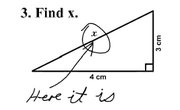Having the ability to read and correctly comprehend written material provides the foundation for a successful school career. As a result, educators use a variety of tools and assessments to measure students' reading ability and progress. When educators want to know how well students read, they generally administer one of two types of tests: diagnostic and reading achievement tests. It is important for individuals to understand the difference between these two tests and the reasons why educators use them.
Diagnostic and Achievement Tests
Achievement tests are used to assess a test-taker’s knowledge in certain academic areas. Considering the word achievement, that is precisely what these kinds of test measure. An achievement test will measure a student's achievement or mastery of content, skill or general academic knowledge.
While the achievement tests measure a test-taker’s level of knowledge or mastery of specific content, diagnostic assessment is used to determine a whether or not a student has met mastery level of specific academic areas, and to determine if there is a deficit in skill. A commonly used diagnostic reading test is the Diagnostic Assessment of Reading (DAR).
Differences in What is Tested
The skills tested on reading diagnostic tests often depends on the student's grade level. For example, middle school and high school diagnostic tests assess vocabulary and comprehension; however, elementary tests include phonemic awareness, phonics, and fluency in addition to vocabulary and comprehension.
Schools districts generally give two types of achievement tests: criterion referenced tests and norm-referenced tests. Criterion-referenced assessments, also called standards-based tests, measure a student's proficiency in state reading standards or it measures how well the student performs a skill. Norm-referenced tests assess the skills that most schools in the U.S. teach; however, they do not measure a specific set of standards or reading curriculum.
Diagnostic Tests
To help plan and pace lessons and to develop curriculum-related activities, teachers often rely on the results from diagnostic tests. Diagnostic tests in education measure how much a student already knows about a subject. They also help identify students who will need extra help to reach their reading goals for that year or those needing academic enrichment because their skills have mastered certain aspects of the reading curriculum.
Standards-Based Achievement Tests
States or districts may use different types of achievement tests. Some require school districts to give reading criterion-referenced tests to all students in a specific grade. Criterion-referenced reading assessments measure the skills in that state's performance standards. These tests report a student's reading level as either not meeting, meeting or exceeding the criteria for proficiency.
Schools sometimes use data from criterion-referenced tests to help determine how well a school's reading curriculum works. Further, they measure the percentage of students meeting state standards.
Norm-Referenced Achievement Tests
Norm-referenced tests compare a student's reading level to the reading levels of a larger group of students, usually a national sample. Educators may use the results to rank the students or identify exceptional students, including both academically advanced students and academically challenged ones. Because norm-referenced tests may cover reading skills that students were not taught, educators should not use norm-referenced tests to measure how well a teacher teaches, how much a student has learned, or the quality of the school's curriculum.
Differences in When They Are Administered
Diagnostic tests can be teacher-made, school-prepared or district-mandated tests, but teachers generally administer diagnostic reading tests at the beginning of a school year. Additionally, many teachers give diagnostic tests before teaching a new skill or standard. State Departments of Education develop achievement tests such as criterion-referenced tests, and professional companies create norm-referenced assessments. Both criterion-referenced tests and norm-referenced tests are administered at the end of the school year.
Related Articles
References
Writer Bio
Janet Rutherford began her writing career in 2006. She served as an English teacher and education consultant for 15 years. She earned a Bachelor of Arts in English education from Rust College and a Master of Education in educational leadership from the University of Mississippi.











